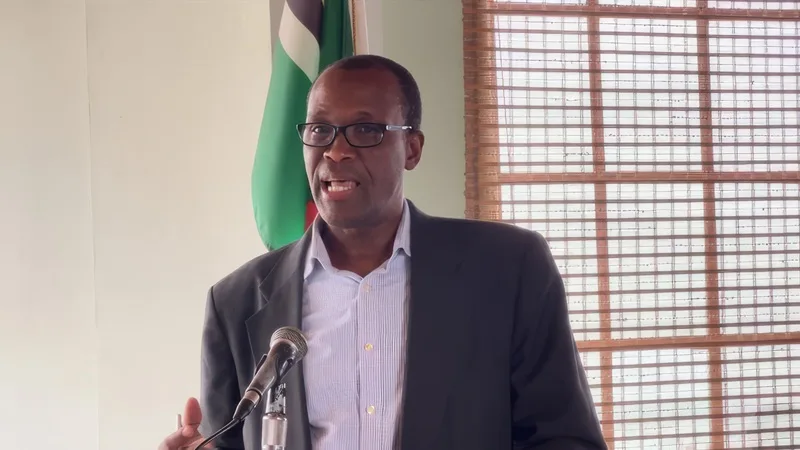Creative Industry and Sector in Dominica

The creative industry and sector in Dominica encompasses the full range of cultural and artistic production, from music, theatre and craft through to film, digital media and design services. It intersects tourism, education and enterprise, turning heritage, talent and place into livelihoods, exports and national expression. As small island developing states recalibrate their economies toward diversification, Dominica’s creative cluster offers both identity and opportunity.
Institutional Framework, Policy and Governance
Dominica’s creative economy rests on a layered institutional framework involving government, private associations and community stakeholders. At the national level, the Ministry of Tourism and the Ministry of Education set policy and training and development priorities. The Invest Dominica Authority (IDA) directs investment and fiscal incentives for creative enterprises, while the Small Business Support Unit assists micro-business registration and support.
Cultural promotion is led by bodies like the Discover Dominica Authority and the Dominica Festivals Commission (DFC), which curate flagship events and festivals that drive demand for creative goods and services. Private sector advocacy falls to the Dominica Association of Industry & Commerce (DAIC), while associations such as the Dominica Arts and Crafts Producers Association (DACPA) and the Waitukubuli Artist Association (WAA) organise artisans, artists and visual creators into networks.
The 2020 profile for the sector produced by the Caribbean Development Bank under its Creative Industry Innovation Fund (CIIF) detailed key features: tax allowances for equipment (including cinematography, printing, radio and clothing machinery) under Schedule II of the Income Tax Act; intellectual property protections via the Copyright Act 2003 and other legislation (Trade Marks Act 1999, Industrial Designs Act 1998); plus the need for stronger data-systems and market-readiness.
Specific national policy commitments are found within the nation’s Cultural Policy, which pledges to “create programmes and opportunities to hone and develop the creative talents of our young people” and to solicit funding for the renovation and upgrading of cultural infrastructure. A 2024 seminar reported by local media emphasised that insufficient data remains a major obstacle in planning and quantifying the creative ecosystem. In turn, the sector is increasingly featured in policy roundtables, such as the 2025 CIIF symposium, during which the CDB pledged deeper support for creatives through more sustainable tools.
Core Industries, Market Structures and Value Generation
The creative industry in Dominica is diverse and multi-layered, spanning musical production, live performance, visual art, craft manufacture, film, and digital media. Below are the primary components:
Key sub-sectors of the creative industry
- Music and live performance (genres such as bouyon, cadence-lypso, jing ping, zouk)
- Theatre, dance, cultural festivals and masquerade arts (e.g. “Real Mas”, Sennse mask-making)
- Visual arts, craft and design (painting, sculpture, textiles such as Madras cloth, costume design)
- Film, video and digital production (including audio-visual, streaming content, promotional work)
- Fashion, brand design, new media and content services (graphics, web design, influencer marketing)
- Heritage tourism and place-based cultural experiences (Kalinago traditions, village festivals, creative trails)
The market structure that supports these sub-sectors is built on both domestic and regional demand. The flagship festival calendar, including the World Creole Music Festival, is a major driver of demand for performances, event production, costume manufacturing, sound engineering, and vendor services. Linked to tourism flows and visitor stays, those events have multiplier effects on accommodation, F&B, transport, and craft sales. Industry commentators note that makers who synchronise production with festivals can convert short-term visibility into repeat business.
Beyond festivals, export readiness is gaining traction. Programmes such as the Creole 4 Business (OECS) aim to turn Creole language and culture into commercial assets by training providers, branding products, fostering creative exchanges, and launching live-arts experiences for French-Caribbean markets (Guadeloupe, Martinique). The initiative estimates that about 20% of Dominica’s visitors come from those markets, representing a niche of over 800,000 consumers. The CIIF profile also highlights that equipment allowances apply to creative enterprises, enabling tax deductions and helping shift micro-businesses toward formalisation.
Revenue is generated from multiple sources: live events, performance fees, music royalties, visual art sales, craft exports, film contracts, digital streaming, licences, and commissions. While exact national GDP contribution data is limited (and flagged as a weakness), regional studies suggest that creative industries globally account for over 7% of GDP on average, and in small islands, the potential is even greater if scaled.
Skills, Education, Enterprise and Support Services
For the creative sector to flourish, supporting ecosystems of skills development, business services, financing, and infrastructure are critical. Dominica shows a growing range of these supports, but many practitioners cite gaps.
Training is delivered through institutions such as the Dominica Institute for the Arts, UWI Open Campus Dominica, secondary schools (e.g., Convent High School, Goodwill Secondary School (GSS)) and the National Youth Council of Dominica, which offers mentorship, workshops and youth enterprise pathways. For visual artists, the Waitukubuli Artist Association (WAA) offers peer networks and exhibitions.
Most financing remains debt-based (bank or credit union loans) and is constrained by collateral requirements, high interest rates and small scales. Equity financing is rare. Creative micro-enterprises present realistic business plans and seek formal partnerships rather than ad hoc arrangements. Responding to this, regional support mechanisms such as the CIIF are now pivoting toward blended finance, technical assistance and export-readiness rather than pure grants.
Business support services ensure creative enterprises can shift from informal to sustainable. Entities such as the Small Business Support Unit, the DAIC, the Dominica Manufacturer’s Association (DMA) and the Dominica Export Import Agency (DEXIA) book-end the value chain: registration, training, standards, packaging and export logistics. Logistics firms such as Millennium Freight Services, West Tech Shipping and KD Logistics facilitate regional and diaspora shipments, enabling craft and design producers to access broader markets. Digital and broadcast platforms (Kairi FM, Q95 FM, DBS Radio) offer marketing, radio play and social media exposure that are critical for creative-business go-to-market plans.
Infrastructure, Festivals, Place-Making and Tourism Integration
A unique strength of Dominica’s creative economy lies in its place-based dimension, culture is embedded in nature, heritage and identity. This link to tourism, environment and community distinguishes the sector from purely urban creative hubs.
Large venues such as Windsor Park Sports Stadium and sites such as Kalinago Barana Autê support events, festivals and residencies. Trails like the Waitukubuli National Trail and protected areas offer backdrops for film shoots, outdoor performances and cultural heritage tourism. Reports on creative placemaking point out that embedding cultural activities into place designs enhances resilience, safety, social cohesion, and tourism value, especially in small island developing states.
Festivals are critical nodes. The World Creole Music Festival draws local, regional and international visitors. When fully leveraged, it supports costume design, vendor markets, media production, food and craft vendors, hotel stays and transport. However, commentators point out infrastructure constraints, such as accommodation capacity and transport links, that limit scalability.
Within your internal-link ecosystem, articles that intersect with this topic include those on community tourism, cultural tourism, film-shoot settings, visual-arts exhibitions, crafts fairs and the intersection between tourism and culture.
Challenges and Strategic Priorities
Despite significant promise, the creative industry in Dominica faces hurdles. Principal among these:
Major challenges to the growth of the creative sector
- Insufficient and inconsistent data collection on creative-economy size, workforce and revenue streams.
- Limited infrastructure for studios, rehearsal spaces, performance venues and film-production facilities.
- Access to affordable finance, risk capital and long-term investment rather than one-off grants.
- Weak value-chain integration: many creators remain informal and lack packaging, logistics, or export linkages.
- Intellectual property issues and rights-management capacity reduce profitability for creators.
- A small domestic market and scattered diaspora export routes require targeted export strategies.
- Digital-skill gaps and limited broadband/internet access in some rural areas.
- Dependence on seasonal and festival demand rather than steady year-round flows.
Experts lament the lack of robust statistics, making it harder to design policy and measure the impact of the creative economy. The CIIF profile also flags the need for a better enabling environment and more business-ready operations.
Strategic priorities for Dominica’s creative industry include: scaling digital content production, strengthening export readiness (particularly within the French-Caribbean and wider diaspora), building studio-infrastructure and post-production services, creating dedicated financing tools (credit, equity, grants linked to business growth), enhancing IP protections and rights monetisation, embedding culture in STEM and ICT training, and promoting inclusive creative jobs for youth and women.
Pathways for Growth and Opportunity
Several growth pathways now stand out for Dominica’s creative sector. These include:
- Digital content export – with global streaming demand rising, Dominican musicians, filmmakers, and designers can access wider markets with fewer constraints on physical goods. The globalisation of creative services means Dominican creators can supply voice-overs, animation, post-production, design services and online music globally.
- Heritage-tourism integration – by embedding craft, performance and music into visitor experiences, Dominica can increase dwell time, spend per visitor and diversification beyond nature tourism. Programs such as Creole 4 Business help build this linkage.
- Creative clusters – developing physical hubs where studios, maker spaces, rehearsal venues, digital labs and business-support services co-locate can catalyse collaboration, reduce overheads and build visible export brands.
- Regional collaboration – leveraging OECS frameworks and French-Caribbean connections opens access to neighbouring markets which share language, culture and consumer preferences.
- Year-round value-chain models – shifting from festival-only peaks to continuous production (digital, crafts, live shows)- stabilise income, reduce seasonality risk, and attract investors focused on predictable cash flows.
- Youth and women-led creative enterprises – empowering under-represented groups widen the base of creative talent, increase inclusion and can generate social-return metrics attractive to donors and impact investors.
Recommendations for Practitioners and Stakeholders
For creatives, recommended action includes registering enterprises with the Small Business Support Unit, exploring tax-allowance eligibility (e.g., Schedule II deductions for equipment) as detailed in the CIIF profile, joining associations like DACPA or WAA for mentorship, and using traditional media platforms (Kairi FM, DBS Radio) to build brand visibility. Creators should consider packaging products for diaspora markets, leveraging logistics firms for shipment and focusing on rights registration to protect their output.
For policy-makers, priorities include building a national creative-industry dashboard through the Central Statistical Office (CSO), developing studio or maker-space infrastructure, designing blended-finance mechanisms beyond grants, updating copyright and IP-registration processes to be more user-friendly, and embedding creative-industry metrics into tourism and culture policy frameworks.
A Unique Perspective: Culture as Climate-Resilience Strategy
What remains less discussed but potentially transformational is the role of the creative sector in Dominica’s climate resilience and sustainable development strategy. Culture sits at the crossroads of place, heritage and community identity. When storms hit and landscapes shift, creative expression offers pathways to recovery, memory-keeping, and livelihoods in new forms. Creative placemaking, the intentional design of public spaces, cultural trails, open-air performance zones and heritage activations, functions not only as arts promotion but also as social cohesion, community regeneration and crime prevention infrastructure. Studies show that in the Caribbean, embedding culture into spatial design reduces risk, deepens tourism value, and broadens community benefit.
In Dominica, where natural disasters are a lived reality, the creative sector can anchor resilience programmes: designing public art projects for rebuilding, staging performance-education in climate-safe structures, producing digital storytelling that augments heritage sites, and generating carbon-aware cultural tourism models (e.g., community craft villages powered by green energy). By positioning creativity in the climate-resilience agenda, Dominica creates a new niche: the world’s first “creative-resilience economy” where artists, makers and designers join architects, planners and educators in building a stronger, more adaptive society.




